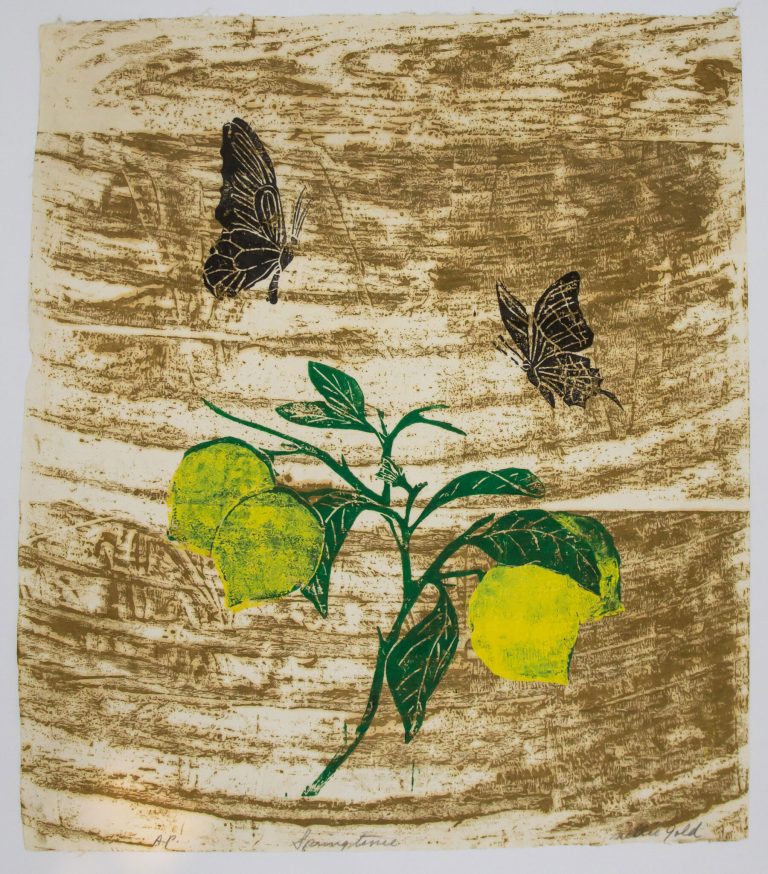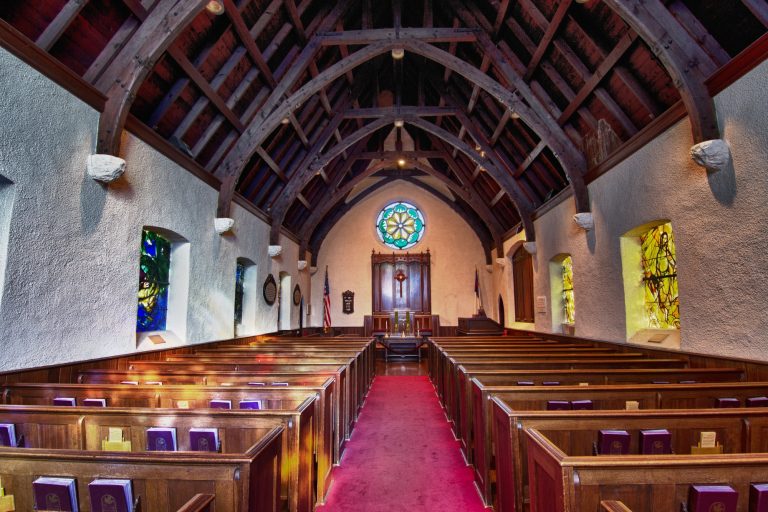Artist Profile: Siona Benjamin
What does it mean to be an immigrant in the United States in the 21st Century? As the concept of identity and nationality is ever changing, the definition of “Immigrant” has taken on different cultural and artistic interpretations as terms such as “First Gen,” “Second Gen,” “Parachute Kid” and “Anchor Baby” have come into our lexicon. At ArtsWestchester’s Crossing Borders: Revisited exhibition, this definition has been expanded to encounter all aspects of migration from one place to another, and how that process can span from physically crossing a national border, to the adjustment people face in America when trying to preserve their cultural roots no matter how far back their lineage in the United States goes.
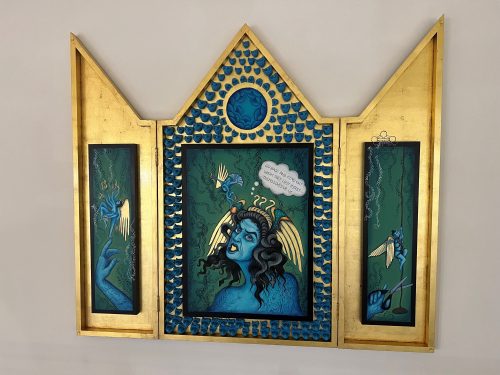
Visual artist Siona Benjamin, one of 15 artists whose works are showcased in the exhibition, is using her rich cultural background and heritage to highlight the role she plays in America today.
Benjamin is a Bene Israel Jew, originally from India, who now lives in the United States. Much of her extensive work reflects her background of being brought up Jewish in a predominantly Hindu and Muslim India. In her projects, she combines the imagery of her past with the role she plays in America today – such as making a mosaic inspired by Indian/Persian miniature paintings, constructing medieval illuminated manuscripts or utilizing imagery such as Pop Art, comic books and Sephardic icons – to explore the socio-political climate of the world and the cultural boundary zones of her immigrant self.
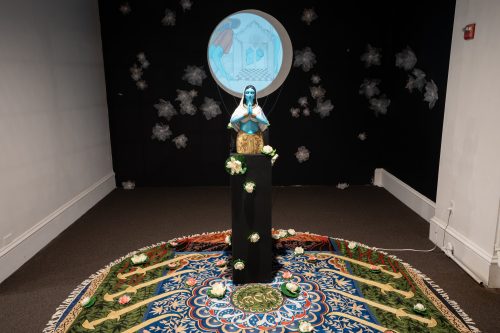
Two of Benjamin’s works are on view in Crossing Borders Revisited. Both explore the religious figure Lilith, identified as the first “Eve” in Jewish Midrashic legends. Her first piece, Amistad: a Slave Ship for a New Century is a boat-like tryptic inspired by exploring and evoking a slave ship carrying refugees that are fleeing dictators of persecution. Her second exhibited work is a commissioned multimedia work exploring the arrival of Lilith in a new country, via parachute. According to Benjamin, “Lilith is sort of brought up negatively in all religions. She’s this first wife of Adam and then becomes demonic. In mainstream religion, she’s not even talked about. So I kind of used her as an actor on the platform of my work. In that triptych piece, for example, she’s Lilith; she’s Medusa; she’s Kali. She’s all of the above.”
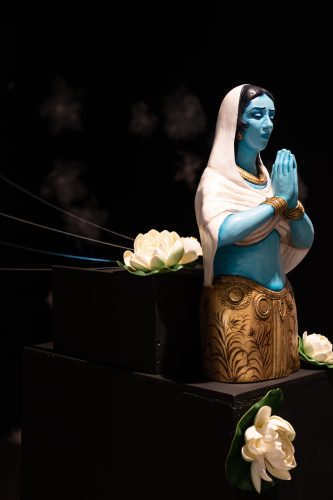
For Benjamin, the main character Lilith is meant to confront the viewer both physically and intellectually in her visual hierarchy: “She represents all these sorts of ‘difficult’ women who raise all these difficult questions and demands, making people feel kind of uncomfortable. And [as] the triptych states, ‘go back and find out who they lost first; themselves or us.’ She’s kind of poking the fire. I think it’s important to sometimes poke that fire and sort of make people a little uncomfortable.”
Being an individual who immigrated from India to the United States, Benjamin’s concept of identity and her relationship to her culture, has undergone a massive shift. An American citizen for nearly 35 years now, she says she feels grateful of what this country has offered her in terms of allowing her to make a living as an artist and as a creative individual. Though, that does not mean that this hasn’t come with feeling moments of grief for Benjamin, and what she describes as “dysphoria”:
“That multi-dysphoric experience of leaving family and feeling of loss, it never goes away. Never having family together in one place is at the core of so much of my work. It’s the main message of my work, how I can change like chameleon. Sometimes I feel more Indian, sometimes I feel more Jewish, and sometimes I feel more American. Sometimes I feel like I’m all of the above, and sometimes I feel none of the above. So, it’s like, that kind of schizophrenic feeling of being dysphoric that many people involved in some kind of diaspora have. They just don’t recognize it and then they feel lost, or they feel – and sometimes I do, too – like they don’t fit within the framework. I still feel displaced sometimes. And at other times, I feel very much together under this trans-cultural tent. It is so vast, and yet so amazing. Right?”
In a time of rising division and tensions from all corners of the world, Crossing Borders aims to offer the opportunity for conversation, understanding and compassion.
“I feel like by making images that talk about the bridging of, or the cross-ventilation of identities and cultures that I’ve experienced is something that we should all recognize as artists. The power of art in these times especially is something that should not go unnoticed.”
Crossing Borders is on view through January 14, 2024.
About Julia Herceg
Julia Herceg is a graduate of Parsons School of Design with a BFA in Communication Design. Born and raised in New York, she is currently Graphic Designer and Communications Associate at ArtsWestchester.


